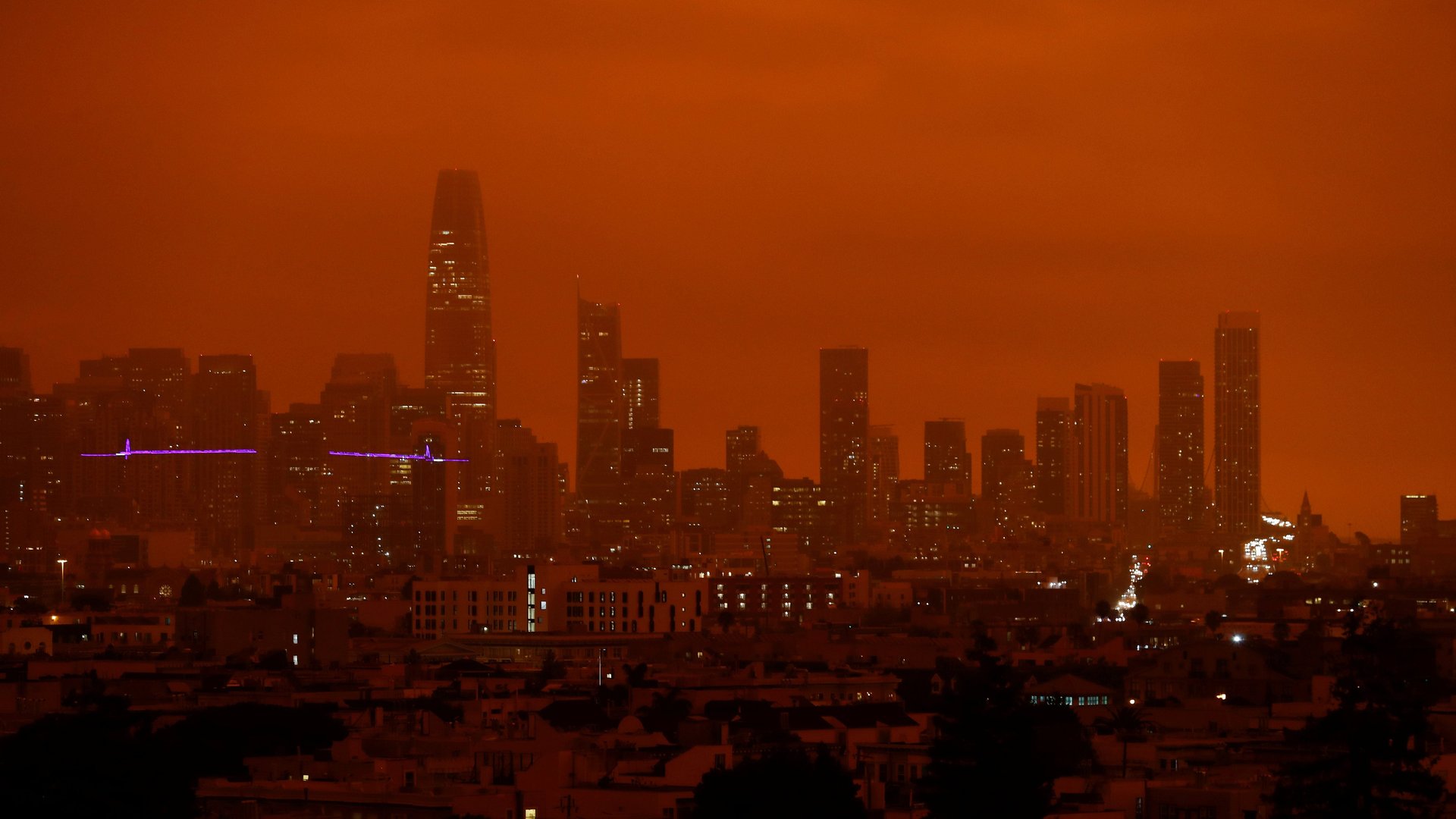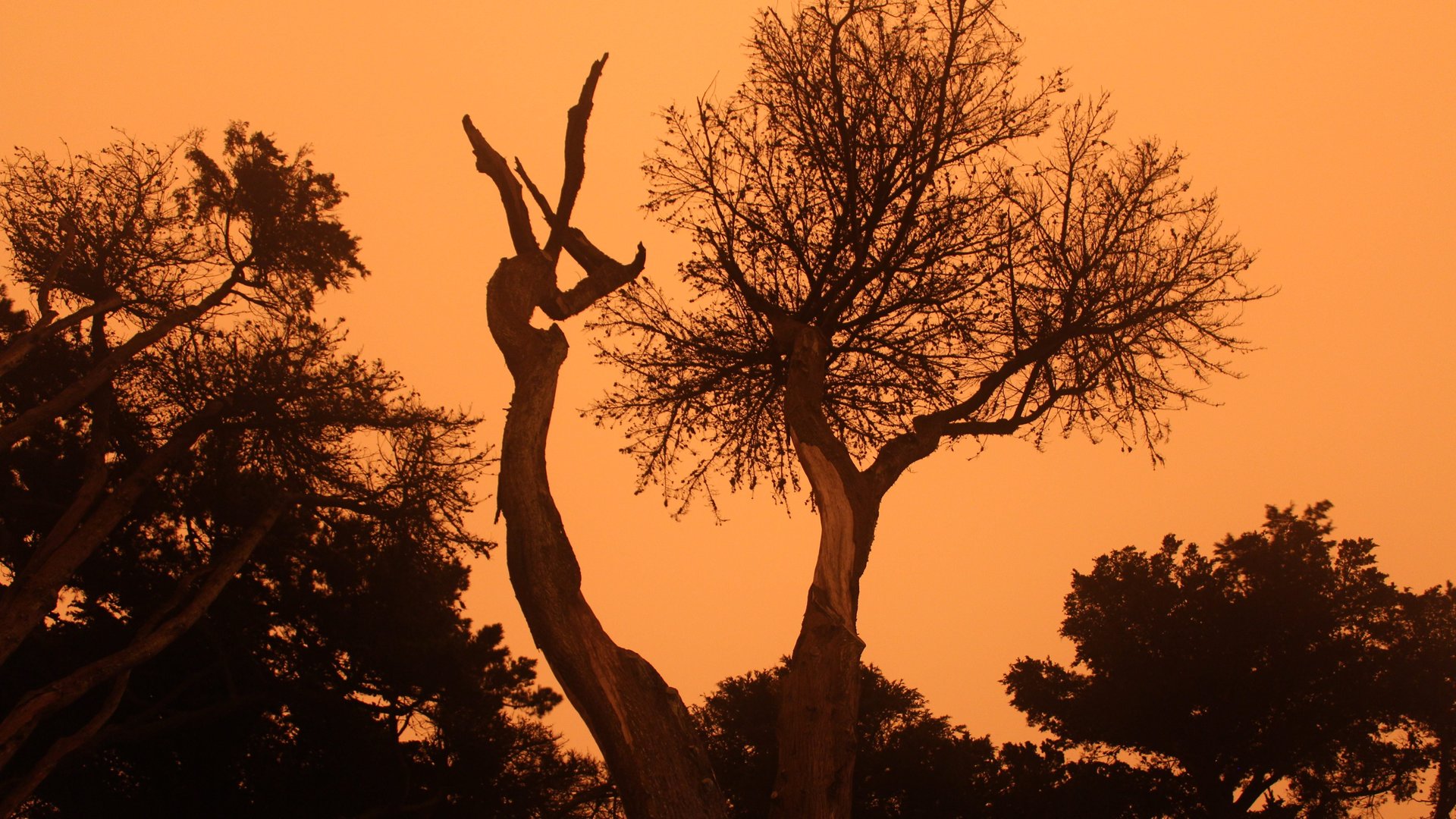For millions of Americans, the wildfires made climate change real
On Sept. 9, I awoke to a different world. A Martian landscape had replaced the Pacific coastline outside my home in San Francisco. Choking smoke from hundreds of fires, several of the largest ever to hit the west coast, stretched from Seattle to Mexico.


On Sept. 9, I awoke to a different world. A Martian landscape had replaced the Pacific coastline outside my home in San Francisco. Choking smoke from hundreds of fires, several of the largest ever to hit the west coast, stretched from Seattle to Mexico.
The world I witnessed in San Francisco that day is hard to explain. There was no dawn, just a red glow that deepened the gloom. I woke up before 7 AM, and the feeling of dread increased with every passing hour as the sun failed to appear. It felt as if the atmosphere itself was burning right above our heads, and we were trapped beneath it.
That, in a way, was true. Stagnant air has kept the incinerated remains of 3.1 million burning acres recirculating in the atmosphere. The air remains hazardous, and at least 64,000 people have been evacuated and 36 killed. More are likely.
We’ve seen wildfires before on the west coast. They’re built into the region’s ecology. But this month’s conflagrations have been unlike anything scientists have witnessed before. Wildfire smoke plumes rose a record 10 miles high. Fire tornadoes, virtually unknown in the US, tore out of at least three fires, prompting the National Weather Service’s first-ever fire tornado warning on Aug. 15.
Something changed for me that morning as well. Looking in every direction, the sky smoldering above me, it was clear there would be no escape from this changing climate. I knew, eventually, the air would clear. Rains would return. But bathed in a sickly orange light, I knew my sense of normalcy would not.
Is this time different?
Like 9/11, or Pearl Harbor, or the arrival of Covid-19, millions of other people on the west coast of the US may remember September 2020 as the month they realized climate change is here now.
Stuck inside last week, I stumbled on a column written by historian Tony Judt the day after 9/11. “On Tuesday morning, Sept. 11, from my window in lower Manhattan, I watched the twenty-first century begin,” it began. “Of that I am certain.” Judt, sitting a few blocks far from where the World Trade Center towers collapsed, realized the curtains on the old world had fallen, and a new world was about to emerge, different but undefined.
Judt, of course, was right. The events set in motion by the collapse of the towers in lower Manhattan reshaped the world in ways that were hard to imagine. The smoke in the west has yet to clear, but it’s already evident last week could be one of those turning points. Many west coast residents will never forget the shared experience of staring up at a red sky, blanketed in smoke.
For some, it is already too much. A friend called me last night to tell me she’s leaving. The fires were the end. “We’re moving back to England,” she said, exhaustion in her voice after a weekend wrestling with the decision. “Mother Nature just gave us a red card, and it’s going to get worse.”
The California Dream is becoming the California Compromise, states the Washington Post. For the first time in a decade, more people left California in 2019 than arrived from other states. While the worsening climate is not the only cause, a fire season that never seems to end and deadly heat waves are the writing on the wall. The cover of The Los Angeles Times spelled out California’s climate dilemma: “The calamity is no longer in the future – it’s here, now.”
Power of one
A single event has the power to reframe our reality. One moment can crystallize what we refuse to see. For Margaret Klein Salamon, the moment came in October 2012 after witnessing the wreckage left by Hurricane Sandy ripping through New York City.
The $70 billion in damage from the storm, the largest ever recorded in the Atlantic basin, was likely intensified by global warming. “Destruction was everywhere,” she writes in her book, Facing the Climate Emergency. “I vividly remember seeing a car that had been smashed by a huge branch. It had a cardboard sign on the shattered windshield that read, ‘Is global warming the culprit?’”
This moment upended the clinical psychologist’s life. She spent the next few months pushing past internal resistance to accept the reality of climate change, through “a deep-seated psychological instinct to defend against that knowledge.” After reading everything she could find about the scientific consensus on climate, she talked to a friend who challenged her to act. Despite having just earned her PhD, she left her profession and founded The Climate Mobilization, an organization pushing for a WWII-scale mobilization to stop global warming.
“I realized that I never wanted anything more than doing everything I could to stop the climate emergency,” she told me.
Salamon’s experience is not unique. In her conversations with climate activists, this drip, drip, drip of climate disasters is what woke many up to the problem they would make a central focus of their lives. And it’s not just activists. Three-quarters of those who now believe in the science of climate change say extreme weather events have changed their views, according to a second University of Chicago survey.
This day is likely to come for more and more of us. It is the day when you know, really know, that climate change is finally here.
For parts of the west coast, it was Sept. 9, 2020. For Australia, it may have been around December 2019, when historic bush fires began to rage out of control. For the citizens of Kiribati, perhaps it was June 25, 2013, when citizens of the sinking island nation saw their plea for refugee status, the first to explicitly cite climate change, rejected by New Zealand’s courts.
History is littered with such moments. Some are momentous. Others are smaller, and deeply personal. It’s the moment when you can’t help but see the world is undeniably changing around you, far faster than you imagined possible. It’s the moment when you look up at the sky in the middle of the day and all you can see is red.
